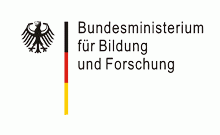Project Objectives
The GBOL consortium is working with a variety of different organisms from different geographic regionsin Germany. In the second project phase (2016-2018) also diatoms and other fungal groups are now includedthat were previously represented by only a few rust fungi. Yet, all project partners have common,general interests and goals:
- Building a DNA barcode library of organisms occurring in Germany with the corresponding voucher and DNA collections.
- Collaboration of various taxonomists in a country-wide inventory effort.
- Development of DNA barcode applications with substantial scientific, forensic, epidemiological and economic benefits.

Towards the end of the first phase of GBOL (2015) the DNA barcode system has undergone various practical tests in cooperation with potential users of DNA barcoding. A general summary can be found in our interim report for 2014.Among other things, the following test applications were performed:
- In collaboration with a fisheries biologist and an environmental agency the macrofauna of the Sieg River near Bonn was examined by DNA barcoding and various aspects of this methodology compared to the conventional methods.
- DNA meta-barcoding of environmental samples from the Eifel National Park (e.g. malaise traps, soil samples) using next generation sequencing (NGS).
- Detection and determination of pest species in forestry in cooperation with the Bavarian Forest National Park.
- In farm, a parasite monitoring should be tested with farm livestock based on DNA barcoding.
- A DNA barcode reference library of a typical spring fauna, which is highly susceptible to climate change in the Berchtesgaden National Park was established.
In the following, second GBOL funding period (2016-2018) further field- and application studies in the context of forestry, agriculture, water quality assessment and forensics are conducted. Details on these can be found here.



